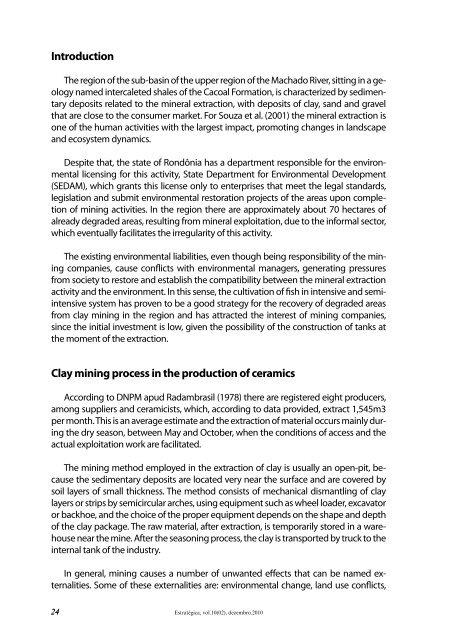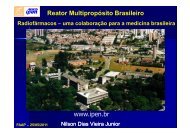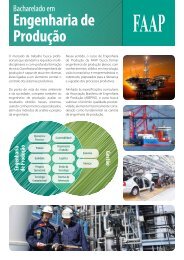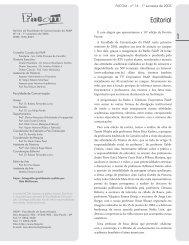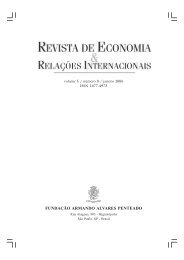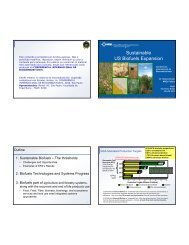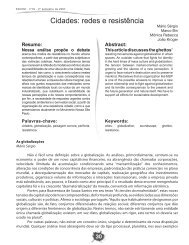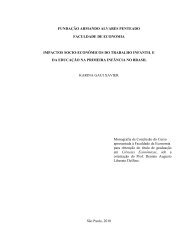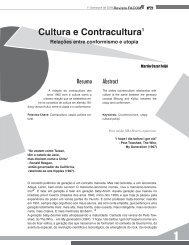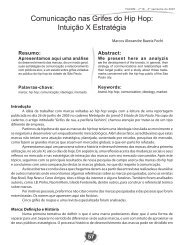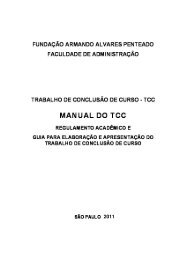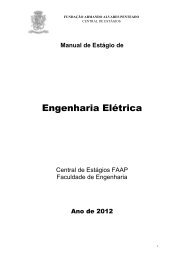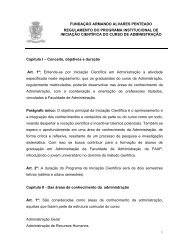Revista Estratégica vol.10 - Faap
Revista Estratégica vol.10 - Faap
Revista Estratégica vol.10 - Faap
Create successful ePaper yourself
Turn your PDF publications into a flip-book with our unique Google optimized e-Paper software.
Introduction<br />
The region of the sub-basin of the upper region of the Machado River, sitting in a geology<br />
named intercaleted shales of the Cacoal Formation, is characterized by sedimentary<br />
deposits related to the mineral extraction, with deposits of clay, sand and gravel<br />
that are close to the consumer market. For Souza et al. (2001) the mineral extraction is<br />
one of the human activities with the largest impact, promoting changes in landscape<br />
and ecosystem dynamics.<br />
Despite that, the state of Rondônia has a department responsible for the environmental<br />
licensing for this activity, State Department for Environmental Development<br />
(SEDAM), which grants this license only to enterprises that meet the legal standards,<br />
legislation and submit environmental restoration projects of the areas upon completion<br />
of mining activities. In the region there are approximately about 70 hectares of<br />
already degraded areas, resulting from mineral exploitation, due to the informal sector,<br />
which eventually facilitates the irregularity of this activity.<br />
The existing environmental liabilities, even though being responsibility of the mining<br />
companies, cause conflicts with environmental managers, generating pressures<br />
from society to restore and establish the compatibility between the mineral extraction<br />
activity and the environment. In this sense, the cultivation of fish in intensive and semiintensive<br />
system has proven to be a good strategy for the recovery of degraded areas<br />
from clay mining in the region and has attracted the interest of mining companies,<br />
since the initial investment is low, given the possibility of the construction of tanks at<br />
the moment of the extraction.<br />
Clay mining process in the production of ceramics<br />
According to DNPM apud Radambrasil (1978) there are registered eight producers,<br />
among suppliers and ceramicists, which, according to data provided, extract 1,545m3<br />
per month. This is an average estimate and the extraction of material occurs mainly during<br />
the dry season, between May and October, when the conditions of access and the<br />
actual exploitation work are facilitated.<br />
The mining method employed in the extraction of clay is usually an open-pit, because<br />
the sedimentary deposits are located very near the surface and are covered by<br />
soil layers of small thickness. The method consists of mechanical dismantling of clay<br />
layers or strips by semicircular arches, using equipment such as wheel loader, excavator<br />
or backhoe, and the choice of the proper equipment depends on the shape and depth<br />
of the clay package. The raw material, after extraction, is temporarily stored in a warehouse<br />
near the mine. After the seasoning process, the clay is transported by truck to the<br />
internal tank of the industry.<br />
In general, mining causes a number of unwanted effects that can be named externalities.<br />
Some of these externalities are: environmental change, land use conflicts,<br />
24<br />
<strong>Estratégica</strong>, <strong>vol.10</strong>(02), dezembro.2010


